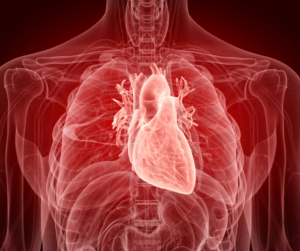What is heart disease?
 Heart disease is a general term used to describe a variety of conditions that affect the heart’s structure and how the heart works. Heart disease includes:
Heart disease is a general term used to describe a variety of conditions that affect the heart’s structure and how the heart works. Heart disease includes:
- Arteriosclerosis, sometimes called “hardening of the arteries,” refers to increased stiffness of the large arteries. This can cause high blood pressure (hypertension), which becomes more common with age.
- Atherosclerosis is the slow buildup of fatty deposits, called plaques, in the walls of the coronary arteries. It is common, but it is not a normal part of aging. The buildup can also occur in arteries of the brain and legs, increasing the risk of stroke, and leg muscles not getting enough blood.
- Angina is pain or discomfort that usually occurs in the chest but can also be felt in the neck or left arm. Angina is caused by decreased blood flow to the heart due to plaque buildup or plaque that breaks off and restricts blood flow in a coronary artery, which supplies the heart muscle with oxygen and nutrients.
- A heart attack occurs when blood flow to the heart is blocked and the heart muscle does not get enough oxygen and nutrients.
Signs of heart disease
People in the early stages of these heart diseases often don’t have symptoms, or the signs may not be noticeable. In some people, early symptoms may be felt only during times of stress or during strenuous exercise. Many people have no symptoms until they experience a heart attack or other related medical problem. That’s why regular checkups with a doctor are important.
If you experience any of the symptoms listed below suddenly or without exertion, call 911 for emergency assistance. Although other conditions can cause chest discomfort, don’t assume it’s something minor. It is critical to have your symptoms checked out quickly in case it is a heart attack. Immediate treatment is essential to prevent permanent damage when the heart is not getting enough oxygen.
Chest pain is not always the main warning sign of a heart attack, so be aware of other possible symptoms:
- Crushing chest pain or pressure in the center or left side of the chest
- Pain, numbness, and/or tingling in the shoulders, arms, neck, jaw, or back
- Shortness of breath when active, at rest, or while lying flat
- Fainting, lightheadedness, or sudden dizziness
- Rapid or irregular heartbeat
- Cold sweats
- Nausea, vomiting, or stomach upset
- Tiredness or fatigue
- Weakness
- Anxiety
The symptoms of a heart attack can be different in men and women. Women are more likely than men to experience shortness of breath; tiredness; weakness; upset stomach; anxiety; and pain in the shoulder, back, or arm. For more information, visit The Heart Truth, a national heart disease awareness campaign for women from the NIH National Heart, Lung, and Blood Institute (NHLBI).
Although these problems can be signs of heart disease, they can also be associated with other health conditions. Tell your doctor about any health concerns you have. If you have signs of heart disease, your doctor may send you to a cardiologist, a doctor who specializes in the heart.
